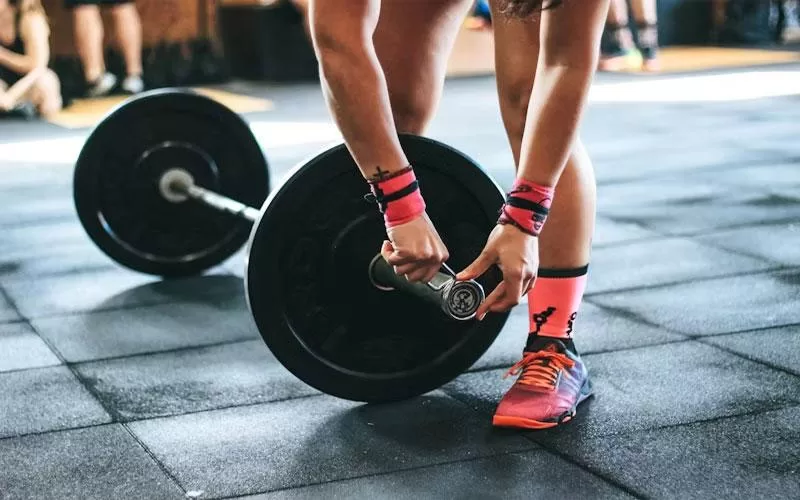
You’ve just completed your strength training session, and you notice something strange and new on your hands: calluses. You find the thick, hardened, and rough layer on your palms unpleasant and annoying. Did I do anything wrong? Did I do anything wrong? How do I prevent calluses when lifting weights? You wonder if incorporating strength training exercises was worth damaging your delicate skin.
Calluses are common in weightlifting and are caused by the friction and pressure from gripping the bar. Your skin in an effort to protect itself from more damage and potential infection produces this thick, hardened layer on your hands. You can prevent this by wearing a grip tape such as WBCM grip tape, and following some other tips outlined in this article.
Here are some ways to prevent calluses when lifting weights:
Moisturize Frequently
Moisturization is crucial to protect your skin from calluses. If you have dry skin, you need it more because your skin’s protective barrier function is less effective. Moisturizing your hands will improve your skin health and reduce the friction between your hands and the bar. This prevents calluses.
Coconut oil is a good moisturizer. If you have one at home, it can come in handy. Studies have proven that coconut oil produces anti-inflammatory effects, providing numerous skin-protective benefits. When applying coconut oil, it’s best to apply it at night. When you go to the gym, you can get a nourishing lotion and apply it every time you wash your hands.
Wear Weightlifting Gloves
Wearing weightlifting gloves helps to prevent calluses. However, it’s vital to invest in quality gloves that cover the palm and a few fingers. This helps to reduce the friction from the bar. Different lifters have different views on weightlifting gloves. Some lifters complain that wearing gloves impels their performance. Others believe that lifting gloves a life-saver.
For instance, people who sweat profoundly struggle to lift weights, but weightlifting gloves will help them maintain a strong grip while preventing calluses. A study analyzing the effect of gloves on grip strength during lifting and carrying shows that the use of gloves provides better control when lifting weights.
Apply a chalk
Applying chalk can help prevent calluses. It can also help you achieve a better grip by reducing the sweat on your hands. Applying chalk is also advisable when performing quick, repetitive movements that cause tears and blisters. Before performing any sets, apply chalk to form a protective coat on your hands. However, the cons of applying chalk too much is that it dries your hands, making it prone to calluses. Therefore, it’s vital to keep your hands well moisturized.
After your strength training, wash your hands with a moisturizing soap and a moisturizing cream. This will help to reduce the drying effects of the chalk on your hands and prevent calluses.

Alter Your Weightlifting Technique
The size and degree of calluses depend on how you grip the bar. Therefore, if you grip the bar wrongly, you will end up creating larger calluses. Most experienced weightlifters struggle with holding the bar correctly. So, it’s normal if you have a hard time adjusting your weightlifting technique.
Although holding the bar in your palms feels more secure and comfortable, the proper position to hold the bar is between your palm and the fingers along the knuckles. Doing so reduces friction and pinching from the bar, which leads to calluses. Therefore, it’s vital to maintain a proper weightlifting technique. You can also use lifting gloves for more protection.
Get weightlifting grips
Lifting grips are mostly used by gymnasts and CrossFit athletes who often use pull-up bars. They decrease the tension and friction in your hands and prevent calluses if used regularly. Incorporating a weightlifting grip into your strength training can feel a bit uncomfortable at first, but with time, you will adapt. Often, athletes make the best choice and combine lifting grips with a hook grip tape. This combo helps to improve grip and prevent blisters.
Invest in Lifting Straps
If you are more into powerlifting than CrossFit training, you’ve got a gem in the form of lifting straps. Lifting straps prevent calluses by protecting your hands. They also redistribute tension and weight away from your hands. Furthermore, they can decrease friction and rubbing on your hands. This helps you to achieve a strong grip, increasing the strength in your forearms and wrists. By using lifting straps, you’re waving calluses goodbye.
Take rest breaks in between workouts
Rest is vital for healthy living. It also gives your hands enough time to recover and heal potential injuries. Doing so prevents calluses in the long run.
Conclusion
There are numerous ways to prevent calluses when lifting weights. They are: moisturizing regularly, using weightlifting grips, lifting straps, weightlifting gloves, adjusting your weightlifting technique, applying chalk, and taking rest breaks. Depending on the nature of your weightlifting exercise and preferences, you can pick any of these options to prevent calluses. However, if you encounter calluses more frequently, you can consult with a dermatologist, or use simple treatments such as salicylic acid.
Leave a Reply